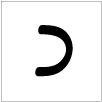Obelism
Obelism is the practice of annotating manuscripts with marks set in the margins. Modern obelisms are used by editors when proofreading a manuscript or typescript. Examples are "stet" (which is Latin for "Let it stand," used in this context to mean "disregard the previous mark") and "dele" (for "Delete").

The obelos symbol (see obelus) gets its name from the spit, or sharp end of a lance in ancient Greek. An obelos was placed by editors on the margins of manuscripts, especially in Homer, to indicate lines that may not have been written by Homer. The system was developed by Aristarchus and notably used later by Origen in his Hexapla. Origen marked spurious words between obelos and metobelos.
There were many other such shorthand symbols, to indicate corrections, emendations, deletions, additions, and so on. Most used are the editorial coronis, the paragraphos, the forked paragraphos, the reversed forked paragraphos, the hypodiastole, the downwards ancora, the upwards ancora, and the dotted right-pointing angle, which is also known as the diple periestigmene. Loosely, all these symbols, and the act of annotation by means of them, are obelism.
These nine ancient Greek textual annotation symbols are also included in the supplemental punctuation list of ISO IEC standard 10646 for character sets.
 The coronis marked subsections.
The coronis marked subsections. The paragraphos was used for breaks.
The paragraphos was used for breaks. The hypodiastole separated words before the use of spaces.
The hypodiastole separated words before the use of spaces. The dotted diple was also used for dubious lines.
The dotted diple was also used for dubious lines.
Modern encoding
Unicode encodes the following:
- U+2058 ⁘ FOUR DOT PUNCTUATION
- U+2059 ⁙ FIVE DOT PUNCTUATION (Greek pentonkion)
- U+205A ⁚ TWO DOT PUNCTUATION
- U+205B ⁛ FOUR DOT MARK
- U+205C ⁜ DOTTED CROSS
- U+2E0E ⸎ EDITORIAL CORONIS
- U+2E0F ⸏ PARAGRAPHOS
- U+2E10 ⸐ FORKED PARAGRAPHOS
- U+2E11 ⸑ REVERSED FORKED PARAGRAPHOS
- U+2E12 ⸒ HYPODIASTOLE
- U+2E13 ⸓ DOTTED OBELOS
- U+2E14 ⸔ DOWNWARDS ANCORA
- U+2E15 ⸕ UPWARDS ANCORA
- U+2E16 ⸖ DOTTED RIGHT-POINTING ANGLE (diple periestigmene)
Some of these were also used in Ancient Greek punctuation as word dividers.[1]
References
- Punctuation Archived November 20, 2014, at the Wayback Machine